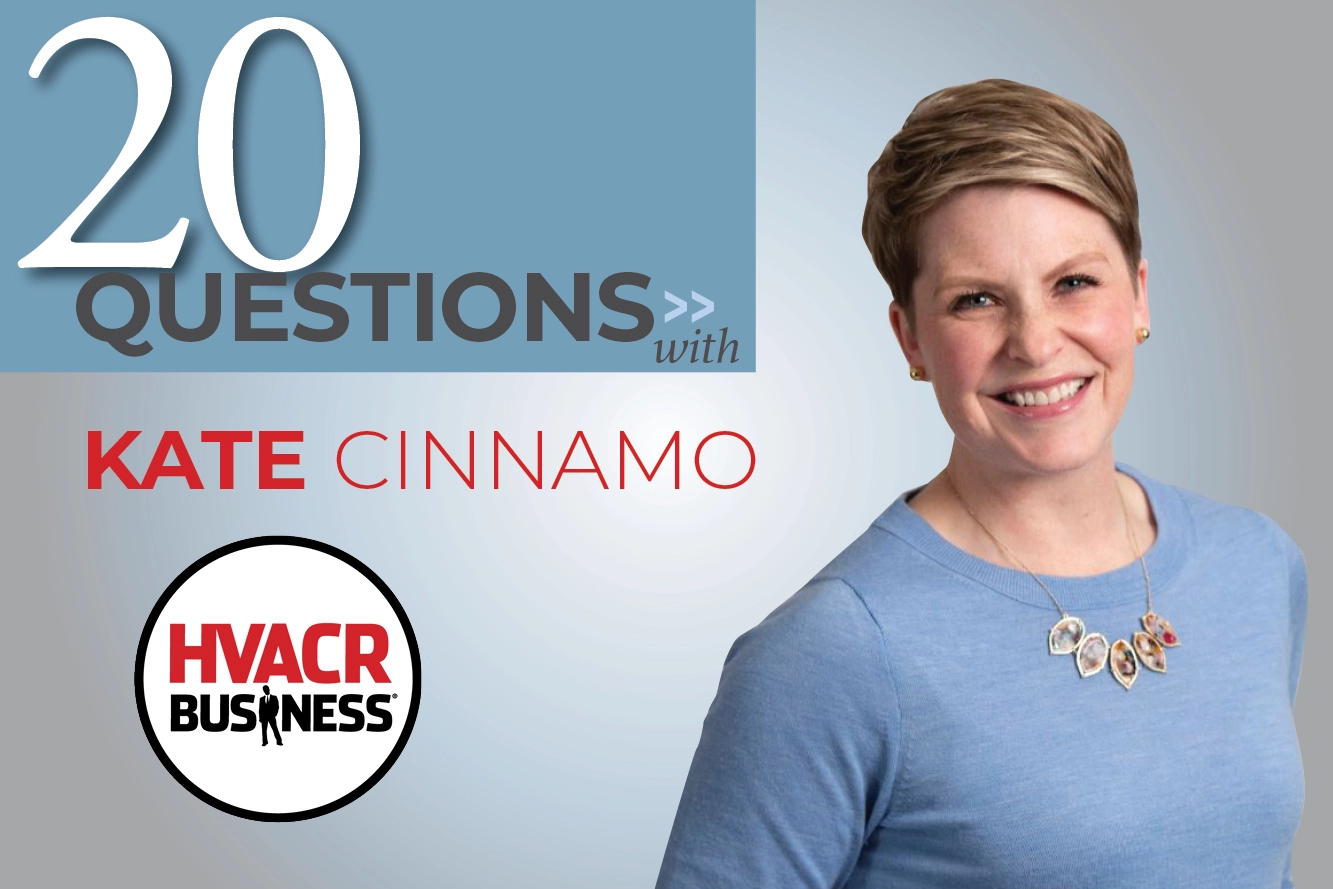HVACR Business Publisher Terry Tanker recently met with Brent Schroeder, president of Emerson Climate Technology's air conditioning business, at its headquarters in Sidney, Ohio. Schroeder discusses product innovation, the industry's biggest challenges and Emerson's new Helix Innovation Center, a $35 million state-of-the-art "ideation" facility on the University of Dayton campus.
1. What are you unusually good at?
That's a tough question to answer, as I don't consider myself to be unusually good at any one thing. Rather, I consider myself to be a pretty good generalist. I've had the opportunity to develop a broad set of experiences and skills throughout my years at Emerson.
2. What's your favorite part of running the business?
I'm a competitive person by nature, so the thing I enjoy most is being part of a great team and working for a company that executes well, even little victories & that's my favorite part.
3. Could you give us an example?
The first one that comes to mind is the recognition Emerson received when the Copeland Scroll variable speed compressor line won Product of the Year at the AHR Expo Innovation Awards. After many years of significant investment, hard work by our employees and close collaboration with our OEM partners, we were recognized with one of our industry's most prestigious awards.
4. As a manager, what would you like to do more of and what would you like to do less of?
I'd like to spend more time outside this office (laughs). That includes more time with customers, in our plants and with our industry partners. That's where all the action is. As far as less, I'd probably like to spend less time in the office reviewing business reports and in meetings looking at PowerPoint charts.
5. Are you involved in new product development?
Yes, I'm very involved in new product development. I spend a lot of time participating in technology reviews, new product planning meetings and in our stage-gate management process. It's probably the one area I spend more time than any other.
6. Why such a big focus?
Our industry is being affected by many new and challenging regulations. Both from an efficiency and refrigerants perspective. It's important for Emerson, as an industry leader and steward, to continually develop next-generation products that help our OEM partners meet these industry needs.
7. What products are addressing those needs?
On the residential side, besides the variable speed line I mentioned earlier, we have introduced new fixed-capacity scroll products, referred to as the KA and K6 platforms, which are being widely used in the new 14 and 15 SEER platforms. We're also in the process of developing our next-generation, two-step modulated compressor referred to as UltraTech. On the commercial side, we're just as active developing new products to help our customers meet the new efficiency levels. We're also active developing new products optimized for the next generation of refrigerants.
8. How long does it take to launch a new product from drawing board to production?
Typically, major new scroll programs take 18-24 months, depending on the amount of field-testing and lead time required for tooling and assembly equipment.
9. Could you tell us more about the Helix Innovation Center Emerson opened on April 27?
The Helix Innovation Center is a collaborative effort with the University of Dayton. We built a state of the art center where we can collaborate with our industry partners to solve our most challenging problems. The Helix provides an open space where we can debate issues, define problems and "ideate" solutions. We can then experiment in any of the five learning modules to validate and refine the solutions.
10. What are the learning modules?
They are full-scale simulated environments that represent a residential home, a commercial building, a commercial kitchen, a grocery store and a data center. In each of these modules, we can test possible solutions in real-world conditions and collect data in a controlled environment.
11. Is the residential module really a full-scale home?
Yes, it's a 2,000-square-foot, fully furnished home built inside an environmental chamber that can simulate temperatures from -20F to 120F. Inside the home, we can run traditional ducted HVAC systems, heat pumps, gas or electric furnaces, duct-free systems, along with both storage and instantaneous hot water systems. It includes different forms of zoning, ventilation systems and air quality technologies.
12. That sounds really impressive & What are your tests able to show?
The module allows us to test out different ways to provide homeowners maximum comfort and air quality in the most reliable and economical manner possible.
13. What was the driving force behind this type of investment?
The Helix Innovation Center was Emerson's recognition that we were not well positioned to solve some of our industry's biggest challenges. We realized the need to think about challenges and trends from a broad system level and we needed all stakeholders to be involved.
14. What was the thought behind locating the Helix on the University of Dayton campus?
Emerson has had a long partnership with the University of Dayton. Nearly 200 students have worked as co-ops or interns at Emerson. Many of them & more than 100 alumni holding more than 120 degrees & have gone on to jobs in Emerson companies. While the relationship provides fertile ground for students to grow as engineers, it also offers professional development, educational and research opportunities for Emerson employees.
15. What are the three largest challenges facing the industry?
Efficiency regulations, the move to new refrigerants & many of which are slightly flammable & and the contractor workforce shortage.
16. How is Emerson positioned to address these?
With respect to efficiency requirements, Emerson has focused a lot of our efforts on modulation technology that enables high efficient systems, superior comfort, in a cost-effective way. On the refrigerant side, Emerson actively supports our industry on refrigerant research. This includes being a leading participant in the Alternative Refrigerants Evaluation Program (AREP) study. We're actively developing compressors optimized for these next-generation refrigerants.
17. What is Emerson doing to assist contractors with the workforce shortage?
We actively work with trade schools, we're a big supporter of North American Technician Excellence (NATE) and we continue to develop technology that makes it easier to install and maintain systems.
18. What do you see as the most alarming problem with the workforce shortage?
Definitely that the most experienced and capable contractors are retiring, while the complexity of our systems is increasing.
19. Do you think regulations will continue at the same pace, slow or pick up?
I'm not really qualified to predict what our government will do (smirk). It's difficult to predict what the next administration will do with respect to efficiency and environmental regulations, but I do know that what is already on the table will keep all of us very busy for the next 10 years. I don't see the pace of new product and technology development slowing down any time soon.
20. What other opportunities are on the horizon?
Besides all the work we're doing to advance our compressor products, Emerson is also doing a lot of work around sensor technology, controls and monitoring. We see these areas becoming more important in next-generation HVACR systems, and they provide some interesting growth opportunities for Emerson.






